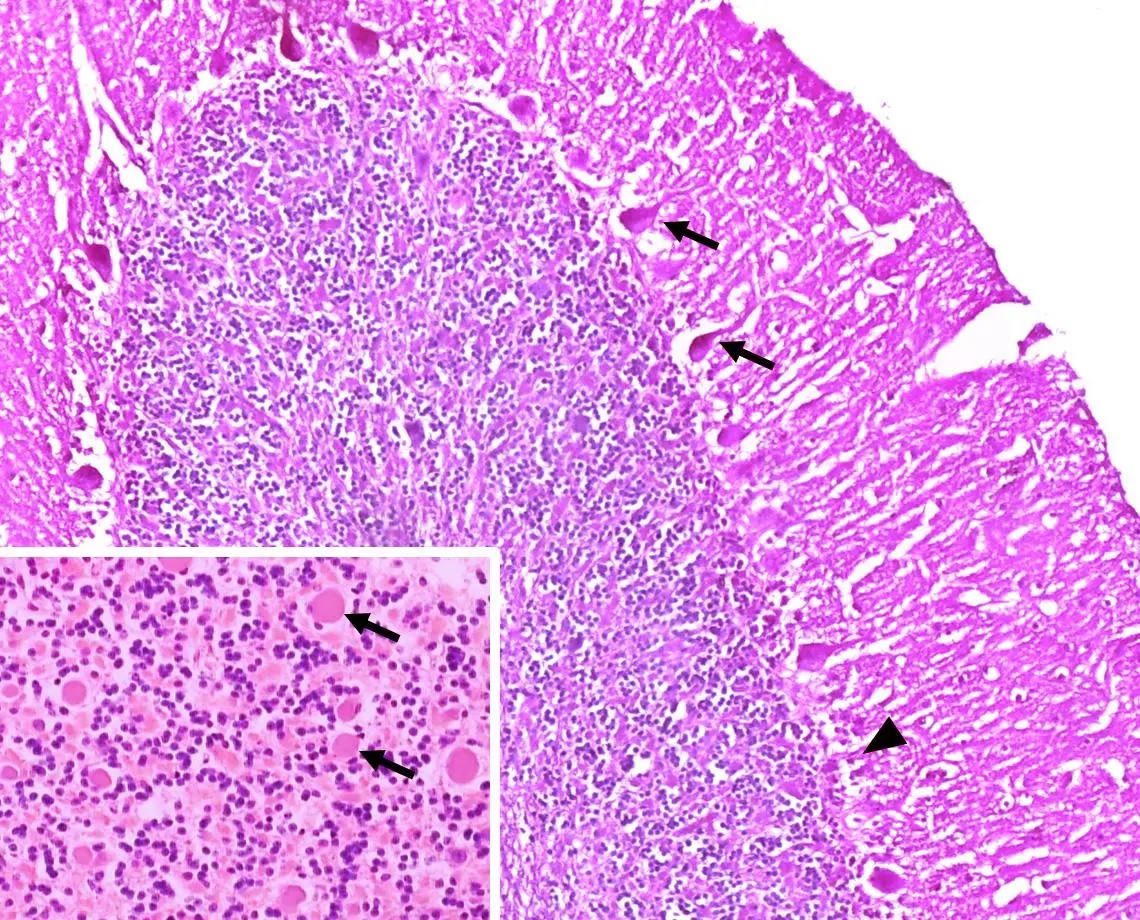Tremorgenic syndrome in suckling lambs due to poisoning by Ipomoea asarifolia
DOI:
https://doi.org/10.24070/bjvp.1983-0246.v12i3p123-127Keywords:
toxic plant, ruminant, neurological disease, sheep, tremorgenic toxin, milkAbstract
The aim of this study was to describe the clinical, pathological and epidemiological aspects of an outbreak of tremorgenic syndrome in suckling lambs associated to Ipomoea asarifolia poisoning occurred in the metropolitan region of Recife, northeastern Brazil. Eight suckling Dorper lambs presented clinical signs after their mothers being kept in pasture invaded by I. asarifolia. Sixty percent of adult sheep, including lactating ewe, only exhibited engorged episcleral vessels. The suckling lambs exhibited neurological signs, such as head and neck tremors, dysmetria, wide-based stance, uncoordinated gait, unusual standing and imbalance followed by falls. These signs became more evident when the animals were forced to move. No gross lesions were found in a necropsied lamb that had died spontaneously. The histological findings were axonal spheroids in the cerebellum granular layer and numerous necrotic neurons in the cerebral cortex and cerebellum molecular layer. This study demonstrates that Ipomoea asarifolia causes tremorgenic syndrome. The toxin is eliminated through milk and suckling lambs exhibit a greater susceptibility compared to adult animals.


